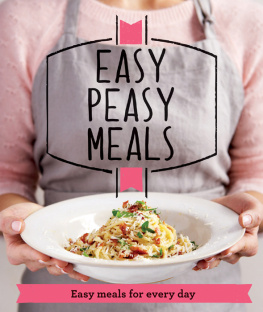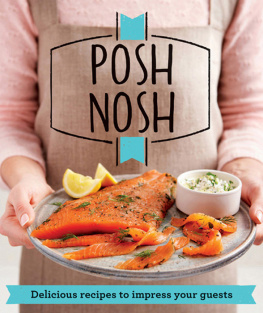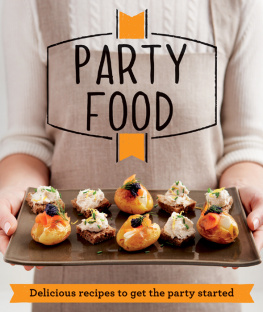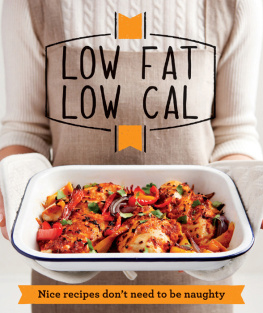

Copyright The National Magazine Company Limited and Collins & Brown 2013
All rights reserved. No part of this publication may be reproduced, stored in a retrieval system, or transmitted in any form or by any means, electronic, mechanical, photocopying, recording or otherwise, without the prior written consent of the copyright holder.
The expression Good Housekeeping as used in the title of the book is the trademark of The National Magazine Company and The Hearst Corporation, registered in the United Kingdom and USA, and other principal countries of the world, and is the absolute property of The National Magazine Company and The Hearst Corporation. The use of this trademark other than with the express permission of The National Magazine Company or The Hearst Corporation is strictly prohibited.
The Good Housekeeping website is
www.goodhousekeeping.co.uk
first eBook publication 2014
ISBN 9781909397682
also available in paperback
ISBN 9781909397033
This book can be ordered direct from the publisher
at www.anovabooks.com , or try your local bookshop.

NOTES
Both metric and imperial measures are given for the recipes. Follow either set of measures, not a mixture of both, as they are not interchangeable.
All spoon measures are level.
1 tsp = 5ml spoon; 1 tbsp = 15ml spoon.
Ovens and grills must be preheated to the specified temperature.
Medium eggs should be used except where otherwise specified. Free-range eggs are recommended.
Note that some recipes contain raw or lightly cooked eggs. The young, elderly, pregnant women and anyone with an immune-deficiency disease should avoid these because of the slight risk of salmonella.


Perfect Poultry
Perfect Preparation
Chicken and other poultry such as turkey and duck are perfect for roasting. Roasting is also a simple way to cook young game birds.
Preparing the bird
Take the bird out of the fridge 45 minutes1 hour before roasting to allow it to reach room temperature. Before stuffing a bird for roasting, clean it thoroughly. Put the bird in the sink and pull out and discard any loose fat with your fingers. Then dry the bird well using kitchen paper.
Trussing
It is not necessary to truss poultry before roasting it, but it gives the bird a neater shape for serving at the table.
Cut out the wishbone by pulling back the flap of skin at the neck end and locating the tip of the bone with a small sharp knife. Run the knife along the inside of the bone on both sides, then on the outside. Take care not to cut deep into the breast meat. Using poultry shears or sharp-pointed scissors, snip the tip of the bone from the breastbone and pull the bone away from the breast. Snip the two ends or pull them out by hand.
Pull off any loose fat from the neck or cavity. Put the wing tips under the breast and fold the neck flap on to the back of the bird. Thread a trussing needle and use it to secure the neck flap.
Push a metal skewer through both legs, at the joint between thigh and drumstick. Twist some string around both ends of the skewer and pull firmly to tighten.
Turn the bird over. Bring the string over the ends of the drumsticks, pull tight and tie to secure the legs.
Hygiene
- Raw poultry and meat contain harmful bacteria that can spread easily to anything they touch
- Always wash your hands, kitchen surfaces, chopping boards, knives and equipment before and after handling poultry or meat
- Dont let raw poultry or meat touch other foods
- Always cover raw poultry and meat and store in the bottom of the fridge, where they cant touch or drip on to other foods

Poultry and Game Perfect Roasting
Basting
Chicken, turkey and other poultry needs to be basted regularly during roasting to keep the flesh moist. Use an oven glove to steady the roasting tin and spoon the juices and melted fat over the top of the bird. Alternatively, use a bulb baster.
How to tell if poultry is cooked
- To check if chicken or turkey is cooked, pierce the thickest part of the meat usually the thigh with a skewer. The juices that run out should be golden and clear. If there are any traces of pink in the juice, put the bird back into the oven and cook for 10 minutes, then check again in the same way
- Duck and game birds are traditionally served with the meat slightly pink: if overcooked, the meat may be dry
Resting
Once the bird is cooked, allow it to rest before carving. Lift it out of the roasting tin, put it on a plate and cover loosely with foil and a clean teatowel. Resting allows the juices to settle back into the meat, leaving it moist and easier to carve.
Resting times
| Grouse and small game birds | 10 minutes |
| Chicken and duck | 15 minutes |
| Turkey and goose | up to 1 hours |
Poultry and game roasting times
Chicken
To calculate the roasting time for a chicken, weigh the oven-ready bird (including stuffing, if using) and allow 20 minutes per 450g (1lb), plus
20 minutes extra, in an oven preheated to 200C (180C fan oven) mark 6.
| OVEN-READY WEIGHT | SERVES | COOKING TIME (APPROX.) |
| 1.41.6 kg (33lb) | 46 | 1 hours |
| 1.82.3kg (45lb) | 68 | 1 hour 50 minutes |
| 2.52.7kg (56lb) | 810 | 2 hours |
Turkey
Wrap loosely in a tent of foil, then cook in an oven preheated to 190C (170C fan oven) mark 5. Allow 20 minutes per 450g (1lb), plus 20 minutes extra. Remove the foil about 1 hour before the end of cooking time to brown. Baste regularly.
| OVEN-READY WEIGHT | SERVES | COOKING TIME (APPROX.) |
| 2.33.6kg (58lb) | 48 | 1518 hours 23 hours |
| 3.65kg (811lb) | 811 | 1820 hours 33 hours |
| 56.8kg (1115lb) | 1115 | 2024 hours 34 hours |
| 6.89kg (1520lb) | 1520 | 2430 hours 45 hours |
Other poultry
Preheat the oven to 200C (180C fan oven) mark 6.
| SERVES | COOKING TIME (APPROX.) |
| Poussin | 12 | 20 minutes per 450g (1lb) |
| Guinea fowl | 1.4kg (3lb) | 34 1 hours |
| Duck | 1.82.5kg (45lb) | 24 12 hours |

























